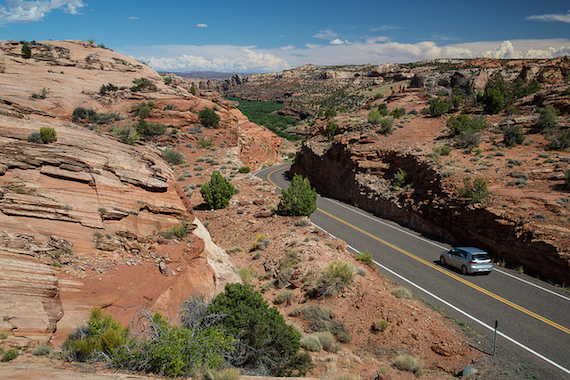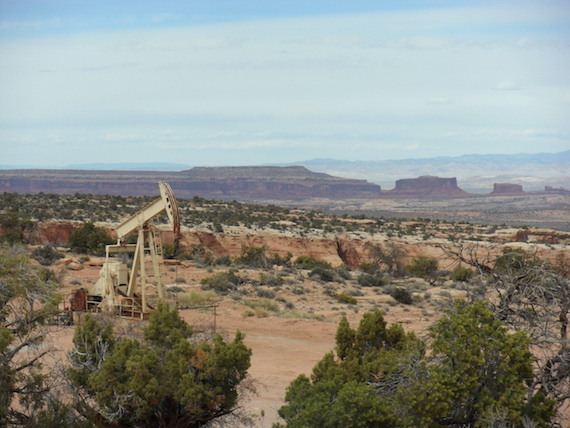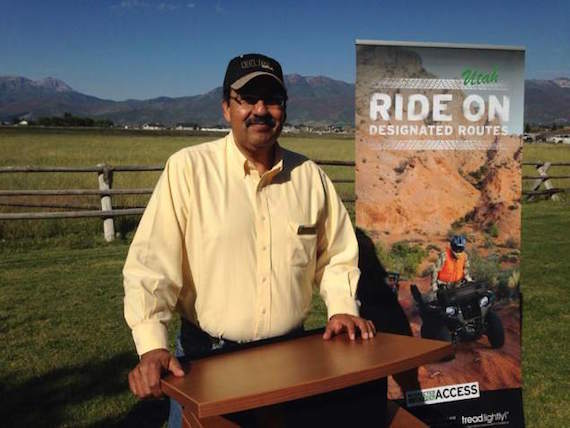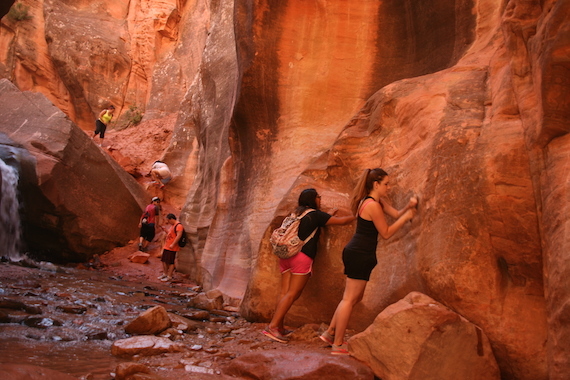I recently had the opportunity to speak with Juan Palma, a warm, friendly and highly respected leader in managing public lands, who retired last month after five years as the State Director of the Bureau of Land Management (BLM) in Utah.
Anyone familiar with the West would understand that being the State BLM Director in Utah is one of the biggest, most complicated, contentious jobs in any public lands agency. Utah's public lands encompass a sensitive, arid ecosystem, unparalleled geological resources, centuries upon centuries of cultural treasures, and some of the most iconic scenery in the United States. All these things are affected by the multiple ways humans use the land, from energy development, to agriculture, to outdoor recreation. Just negotiating the political minefields laid by competing interests across Utah's public lands would be challenging, to say the least.
Juan Palma is noted for finding balance in working with the various interests. Most notably, he helped pioneer a new movement towards long range, landscape-wide planning that considers the multiple ways that people use the land. He was the force behind a pending draft Master Leasing Plan for the Moab area, where he garnered the participation of oil and gas developers, ranchers, and the outdoor recreation community.
Working together is key for smart planning
When I asked him how he got everyone to the table, his answer was straightforward. "Collaboration," he said, and added:
"We must meet face to face in order to see eye to eye."
More than just a little dicho, or "saying," those simple words seem to be Palma's guiding principle. "I put a lot of miles on my vehicle," he said, "and sat down with some of the most ardent critics of the BLM. I sincerely wanted to know what they think, even if I disagreed with them."
And the BLM does have ardent critics. The most ardent may very well be those who believe that federal public lands shouldn't exist at all. In Utah and many other western states there is a movement afoot for state governments to take over federal lands -- and now they have some key allies on the hill, including Utah Representative Rob Bishop, Chairman of the House Natural Resources Committee, who, in a recent interview, indicated his interest in transferring federal public lands to states.
Although I spoke to him before the Bishop interview appeared, Palma brought up the controversial congressman. "I know Rob Bishop. I talk to Rob Bishop. At the end of the day I often disagree with him, but I want to understand where he is coming from." On the particular issue of federal land transfers, Palma believes "it isn't going anywhere." The public will eventually realize that land transfers could translate into decreased access to public lands.

Public access to millions of acres of public lands could be threatened by transferring federal lands to states. BLM Photo
Personal history influenced public decisions
Palma went on to explain that his own perspectives on public lands and his approach to managing them has a lot to do with his own personal history and culture.
As a child, he traveled with his parents, working fields from the San Joaquín Valley on northward into Washington. His family eventually settled in beet farming and fruit-growing country in Toppenish, Washington, on the Yakima Reservation. "Those were my most formative years," he said. His time in the fields, and coming of age in a rural community, Palma was always surrounded by open spaces, yet his family lived in close quarters with other farm workers, so community was integral to daily living. He grew up a communicator, and as he would realize later, becoming a conservationist was also natural to him.
"It wasn't until I was in my 30s, that I began to pursue a career in the public lands, --first with the National Forest service." Like many people who work for public land agencies, Palma had to start at the bottom, working as a typist, and eventually moving to the BLM, where he would work his way up through the ranks to lead the agency in Utah, where BLM controls nearly half the land in the state. While he is known for saying that "only in America" can a migrant kid grow up to be in charge of so much land, he also acknowledges that growing up working on the land is the reason he came to appreciate and care for public lands so much. "Our culture is tied to the outdoors. It has been for centuries," he says.
Leaving a lasting legacy
Palma's first month of retirement saw some big news coming out of the BLM and Department of Interior, and the coming months will likely see more big news. For people who enjoy the outdoors, the news is much more hopeful than February's Record of Decision on the Tres Rios Resource Management Plan, which could potentially develop over 90 percent of Southwestern Colorado.
However, the newly announced Dinosaur Trail Master Leasing Plan in Colorado will protect Dinosaur National Monument from oil and gas development, as well as protect important wildlife areas. The draft Moab Master Leasing Plan will also likely be released in the spring, capping Palma's career with a hard-won success.
Landscape-wide planning is smart planning
I asked Juan Palma about the Master Leasing Plan (MLP) process, and why he supports it. "It's the way things should be done, now and into the future," he said. The process is inclusive, bringing more than just one interest into account, and gives various communities affected by development more say in how and where development should occur, and which resources, including recreational and cultural resources, should be protected.

The impact of oil and gas development in Utah is evident, even in scenic landscapes. Photo by Camilla Simon
In Moab, Utah, an MLP spells continued success for the recreation and tourism economy by protecting parks and public lands that are valuable to people who enjoy Moab's broad range of recreation opportunities, cultural resources and natural scenery. Hiking, mountain biking, jeeping, river running, and rock climbing are among the most popular activities that fuel Moab's economy. Canyonlands and Arches draw hundreds of thousands of people every year.
"I see a new BLM in the future," Palma said. With new, landscape-wide planning processes like Master Leasing Plans, management decisions in areas are not necessarily left solely to a single field office. The BLM has generally run its planning processes through field offices in particular areas. More inclusive, regional planning could break that pattern, by creating a better public process as communities are engaged, and establishing more consistency throughout the system. "I think the BLM will be a better agency," he said.
Getting youth outdoors
Before I closed our conversation, I wanted to know what the future holds for Juan Palma. "I have a positive outlook," he said. "I won't be doing this work anymore, but I still see myself being involved, somehow." The outdoors and public lands is definitely in Palma's blood, and he returned to the idea of Latino values for the outdoors and conservation. "We need to keep getting our youth out there," he said. "It was easy for us to be connected to the outdoors as we grew up. But now it's easy to just stay indoors all the time. We need to keep those connections to the outdoors alive, so we don't lose our public lands."

